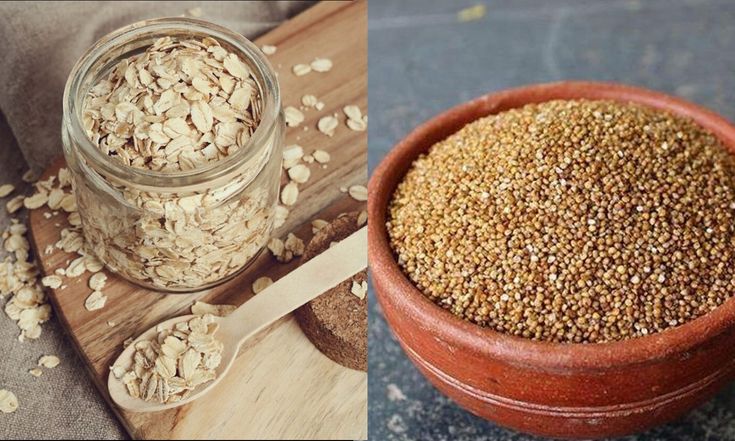

Millets vs Oats - A Comprehensive Comparison
Navigating the world of grains can be a daunting task, with a wide array of choices available. Two of the most talked-about grains in the health and wellness sphere are millets and oats. This article aims to provide an in-depth comparison of these two power-packed grains, their nutritional profiles, health benefits, and more.
Introduction to Millets and Oats
Millets - An Ancient Grain
Millets are a group of small-seeded grains that have been cultivated in Asia and Africa for centuries. They are known for their rich nutritional profile and drought-resistant properties. Different types of millets include pearl millet, foxtail millet, proso millet, finger millet, and barnyard millet. They are gluten-free and packed with protein, fiber, minerals, and antioxidants.
Oats - The Modern Trend
Oats, on the other hand, are a type of cereal grain primarily grown in temperate regions. They are known for their high protein and fiber content, along with a range of vitamins, minerals, and phytochemicals. Oats are generally gluten-free, unless contaminated with wheat or other gluten-containing grains during processing.
Nutritional Comparison of Millets and Oats
While both millets and oats are nutrition powerhouses, they each possess their unique strengths. Let's delve into a detailed nutrient comparison of these two grains.
Protein Content
When compared per 100g, millets slightly edge out oats with 11g of protein versus 10.7g in oats. However, oats have nearly 40% more protein than certain types of millets like Proso Millet and Foxtail millet.
Fiber and Mineral Content
In terms of fiber, millets again take the lead with 8.5g of dietary fiber per 100g, as compared to 6.5g in oats. Millets also contain more calcium, magnesium, phosphorus, potassium, zinc, and iron. For instance, Ragi, a type of millet, has close to 5.5 times the calcium content of oats.
Vitamin Content
Oats shine in the vitamin department, especially vitamin B. They contain more thiamin, riboflavin, niacin, and folate, all types of vitamin B, as compared to millets. Additionally, oats have more manganese, an essential mineral for metabolism and antioxidant defense.
Health Benefits of Millets and Oats
Both millets and oats offer a plethora of health benefits, making them excellent additions to a balanced diet.
Heart Health and Blood Sugar Control
Oats have been linked to improved heart health due to their high fiber content, which can lower cholesterol levels. They also contain beta-glucans, a type of soluble fiber, which can improve insulin sensitivity and regulate blood sugar levels.
Anti-Inflammatory Properties and Weight Management
Millets, on the other hand, are known for their anti-inflammatory properties. Being low in glycemic index, they can aid in weight loss and are a suitable choice for individuals with diabetes or those looking to manage blood sugar levels.
Culinary Versatility
Both oats and millets can be used in a variety of dishes, adding not just nutrition but also taste and texture to your meals. Oats can be used in oatmeal, granola, smoothies, and baked goods, while millets can replace rice in dishes like pilaf and serve as a gluten-free alternative for flour in baking.
Cost-Effectiveness
In terms of cost, millets are generally more affordable than oats, offering excellent value for money. Hence, millets can be an economical addition to your regular diet without compromising on the nutritional front.
The Verdict - Millets or Oats?
Both millets and oats have their unique set of nutrients and health benefits. It ultimately depends on your dietary needs and preferences. If you're looking for a grain rich in protein, fiber, and heart-healthy benefits, oats might be the better choice. However, if you're seeking a gluten-free grain that's rich in minerals and has anti-inflammatory properties, millets might be the way to go.
Remember, variety is the spice of life. So, why not incorporate both oats and millets into your diet? This way, you can reap the benefits of both these nutrient-dense grains.
Supporting Local Farmers with Millets
On a side note, by consuming millets, we also support the farmers growing these resilient crops. Millets are easy to grow, even in drought conditions, and are often cultivated by farmers in rain-fed agricultural landscapes. Hence, by choosing millets, you're not only nourishing your body but also contributing to a sustainable and equitable food system.
An Easy Way to Incorporate Millets - Try Naario's Products
If you're new to millets and wondering how to incorporate them into your diet, we recommend trying Naario's 9 in 1 flour mix, Millet Muesli, and Bhakhri Snack. Made with a variety of millets, these products are not only nutritious but also delicious, making it easier for you to enjoy the benefits of millets.
Conclusion
In the battle of millets vs oats, there's no clear winner as both grains pack a punch in nutrition. The choice between the two ultimately depends on personal preferences and dietary needs. By incorporating both oats and millets into your diet, you can enjoy a balanced intake of nutrients and boost your health in the long run.
